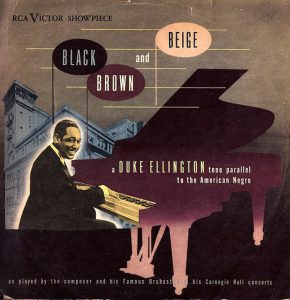 January 23, 1943. Carnegie Hall. Duke Ellington and His Orchestra make their debut at the legendary venue. On the program is the premiere of Ellington’s new magnum opus – his three movement jazz symphony, “Black, Brown & Beige.” It is Ellington’s longest and most ambitious composition to date. Admittedly, the piece as a whole is under-rehearsed and rough in spots. But Duke is excited to use this stage-of-all-stages to make a grand statement on the Black condition.
January 23, 1943. Carnegie Hall. Duke Ellington and His Orchestra make their debut at the legendary venue. On the program is the premiere of Ellington’s new magnum opus – his three movement jazz symphony, “Black, Brown & Beige.” It is Ellington’s longest and most ambitious composition to date. Admittedly, the piece as a whole is under-rehearsed and rough in spots. But Duke is excited to use this stage-of-all-stages to make a grand statement on the Black condition.
He dubbed it, “a tonal parallel to the history of the Negro in America.” Within each movement, suites reflect components of the African-American experience, from slavery to Harlem to swing. Tympani portray the sounds of hard labor. Muted trumpets echo wails and work songs. There are spirituals and dance numbers. The work is rich and orchestral, but most assuredly jazz. Ellington makes sure his audience knows that jazz is America’s music – created by Black Americans.
Critical response to the Carnegie Hall performance is, at best, mixed. Discouraged by its tepid response, Ellington only performs “Black, Brown and Beige” once more before breaking it into pieces. Yet those pieces, like “Work Song,” and “Come Sunday,” collectively make the most powerful statement of all: We’ve come so far, but still have so far to go.
“Soundtrack to the Struggle” is written and produced by Ron Adkins. Executive Producer Dennis Green. Host: Hollis Monroe.
Podcast (soundtrack): Play in new window | Download
Subscribe: Apple Podcasts | RSS
